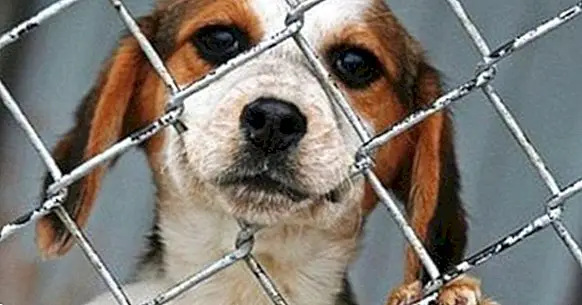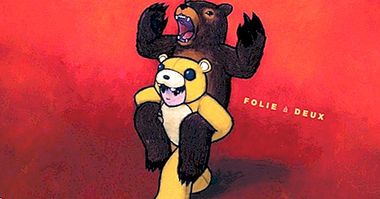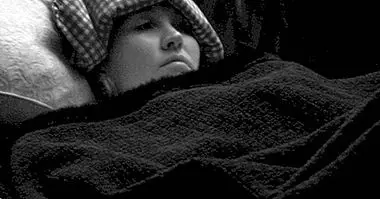Animal abuse in minors: children's things?
When a case of animal cruelty appears in the media, most people question why someone would do something like that, being much more shocking when the author is a younger . Thus, it is normal that many unknowns appear on the subject. Why do some children mistreat animals? What is going through their heads? Is it a game for them? Are they "children's" things?
In the last 40 years many researchers from different parts of the world have tried to answer these questions, partly due to the greater pro-animal awareness in our society. In fact, many of them still can not be answered unequivocally, because at the moment the investigations are insufficient to understand the dimension of the problem, a fact that could be attributed, among other aspects, to the fact that the attacks are produced specifically towards a different species to ours, what can be called Species.
What do we mean by cruelty towards animals?
But ... what exactly can be qualified as "cruelty to animals"? The most accepted definition in the scientific literature is that of one of the most renowned researchers in this area, Frank R. Ascione: "Socially unacceptable behavior that intentionally causes unnecessary suffering, pain or distress and / or death of the animal".
They do not include, therefore, and even if they cause unnecessary suffering to the animals, more socially accepted behaviors such as intensive livestock farming that ends up in slaughterhouses, legal hunting, raising animals to obtain their skin, scientific experimentation with animals, shows with animals (bullfights, circus, zoos ...). However, the definition of cruelty to animals should also include, according to several authors, acts of malpractice due to negligence when there is intentionality to cause harm.
Why do some children mistreat animals?
After interviewing several adolescent aggressors, the researchers Ascione, Thompson and Black They proposed in 1997 different answers to this question based on the underlying motivations that the youngest can have when attacking animals domestic or wild.
According to these authors, children / adolescents who mistreat animals do so basically for these reasons :
- To satisfy your curiosity / exploration (eg, the animal is damaged or killed in the process of being examined).
- Peer group pressure (eg, as a process of ritualistic initiation to enter a certain group of young people).
- To raise the mood (eg, to combat boredom and / or depression).
- Sexual gratification (known in English as "bestiality").
- Forced Abuse (eg, the child is forced to abuse the animal by another, more powerful person, very often in cases of Domestic Violence, where the child may become the animal's aggressor to prevent a more painful / slow death of the animal. part of the powerful person).
- Animal phobia (the minor kills or hurts the animal as a preemptive strike).
- Post-Traumatic Game (the minor recreates scenes of high violent charge as emotional discharge).
- Training for interpersonal violence with humans (eg, the child practices his techniques with animals before daring to harm people).
- Vehicle for emotional abuse (eg, damaging a family member's pet to scare him).
Other explanations
Other authors add some motivations from interviews with inmates in Kansas and Connecticut, who had assaulted animals in their adolescence / youth. All the examples are real:
- To control the animal (It is intended to eliminate behaviors of the animal that do not please, for example, kicking the testicles to a dog to stop barking).
- To get revenge on the animal (eg, revenge on a cat that has scratched the couch by burning it alive).
- To satisfy a prejudice against some specific species or race (very common hatred of cats).
- To express the human aggressiveness through the animal (For example, inflicting damage to the animal to prepare the dog for fights with other animals.
- For fun and to shock others (eg, tie two cats in the tail and burn them to see how they run in a desperate way).
- Sadism not specified (Desire to hurt, torture and / or kill an animal without having perceived any kind of provocation and without any a priori hostile feeling against the animal, killing himself for pleasure, for enjoying the death process). These children would be the ones with the worst prognosis .
Are they "children's things"?
On a psychological level, animal abuse is telling us that there are cognitive dysfunctions (wrong ways to interpret power and control) and / or environmental in the minor . Several authors have warned about this phenomenon throughout history as an indicator of psychological imbalance (for example, Pinel in the year 1809, or Margaret Mead in 1964).
In fact, the American Psychiatric Association in 1987 included animal cruelty as one of the 15 symptoms of the well-known Child Behavior Disorder. In addition, children who commit acts of cruelty to animals are more likely to have behavioral problems more severe than those with other symptoms.
Animal abuse and other forms of conflict
It is also important to note that cruelty to animals is related to domestic violence, with child sexual abuse and with bullying or school bullying, among others.
Children exposed to domestic violence and / or who are abused (whether physically, sexually or psychologically) tend to be more violent towards animals than children who have not gone through such unfavorable situations. These children may be expressing the pain that their own process of victimization entails through the abuse of the most vulnerable victims: animals.
In other words: animal cruelty in childhood can be a warning sign as the family / school environment is being violent or abusive for the child , so it is advisable to pay special attention to the child as soon as a situation of animal abuse takes place.
Therefore, these acts should not be considered as a simple passenger game of children or play down their importance; behind these episodes of cruelty can be discovered many traumatic situations in which the child has been the victim.
How can animal abuse be prevented?
Diverse investigations have shown that educating minors transmitting positive values towards all living beings of the planet is a very important element in the face of the prevention of cruel acts against animals and treatment, facilitating the development of empathy even towards humans .
These educational programs help to develop a sense of responsibility, of concern for others, in addition to collaborating in the development of self-esteem, socialization and cooperation.
The implications this has on a global scale are clear: if cruelty to animals were taken into account as a more significant way of attacking and / or demonstrating antisocial behavior, progress would be made in understanding and preventing child and adolescent violence. .
Links of interest:
"Three minors run away from the center of Abegondo and kill 40 rabbits" (La Voz de Galicia)"A group of minors frightened the neighbors of Marinaleda after killing nearly 30 animals" (El Correo de Andalucía)
"PACMA denounces the children who kicked a kitten in Cuenca" (Huffington Post)
Bibliographic references:
- Arluke, A., Levin, J., Luke, C. & Ascione, F. (1999). The relationship of animal abuse to violence and other forms of antisocial behavior. Journal of Interpersonal Violence, 14 (9), 963-975. doi: 10.1177 / 088626099014009004
- Ascione, F. R. (1993). Children who are cruel to animals: A review of research and implications for developmental psychopathology. Anthrozoös, 6 (4), 226-247. doi: 10.2752 / 0892793393787002105
- Ascione, F. R., Thompson, T. M. & Black, T. (1997). Childhood cruelty to animals: Assessing cruelty dimensions and motivations. Anthrozoös, 10 (4), 170-177. doi: 10.2752 / 0892793977787001076
- Ascione, F. R. (2001). Animal Abuse and Youth Violence, US Department of Justice, Office of Justice Programs, Washington: Office of Juvenile Justice and Delinquency Prevention.
- Baldry, A. C. (2005). Animal abuse among preadolescents directly and indirectly victimized at shcool and at home. Criminal Behavior and Mental Health, 15 (2), 97-110. doi: 10.1002 / cbm.42
- Duncan, A., Thomas, J. C., & Miller, C. (2005). Significance of family risk factors in childhood development cruelty in adolescents boys with conduct problems. Journal of Family Violence, 20 (4), 235-239. doi: 10.1007 / s10896-005-5987-9
- Hensley, C. & Tallichet, S. E. (2005). Animal cruelty motivations: assessing demographic and situational influences. Journal of Interpersonal Violence, 20 (11), 1429-1443. doi: 10.1177 / 0886260505278714
- Luk, E.S., Staiger, P.K., Wong, L., & Mathai, J. (1999). Children who are cruel to animals: A revisit. Australia and New Zealand Journal of Psychiatry, 33, 29-36. doi: 10.1046 / j.1440-1614.1999.00528.x



















